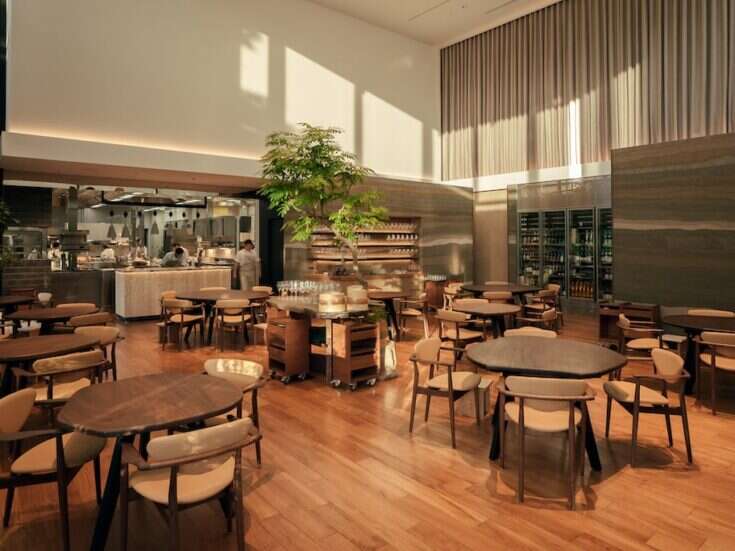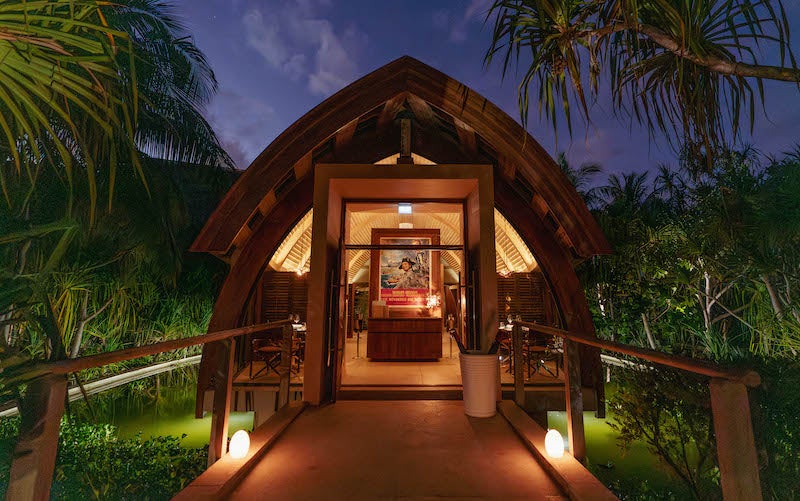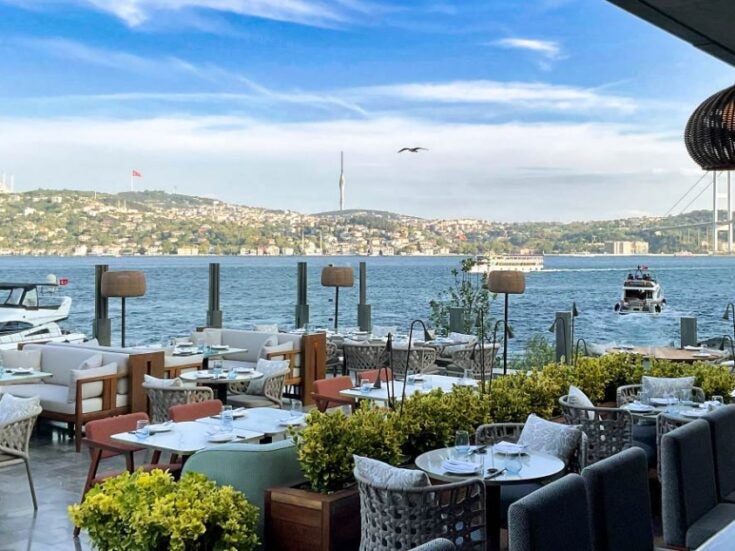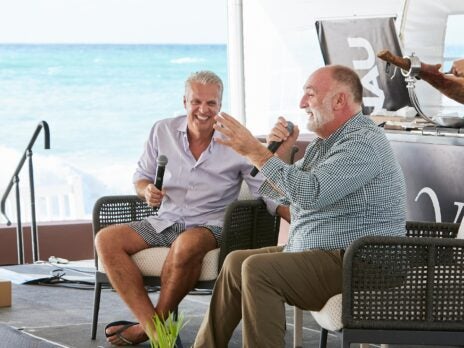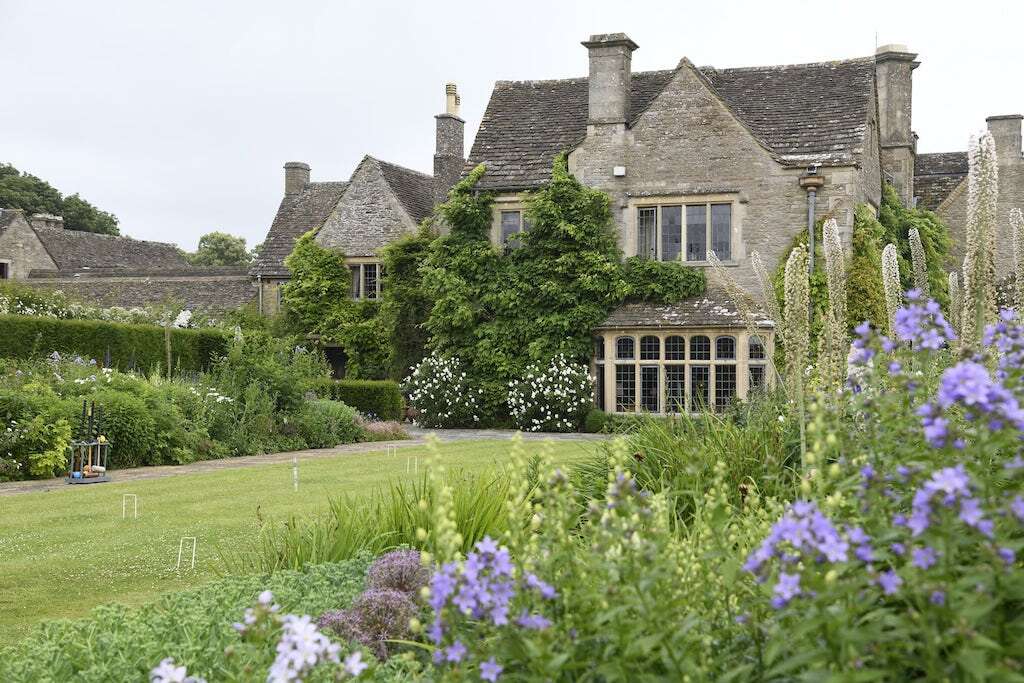
Driving through the Cotswolds, where ancient stone farmhouses sit peacefully on top of rolling hills, it’s easy to be charmed. This is where you get England’s biggest horizons, its most beautiful roads and a tactile vision of the country’s rural history. On a fine day in late spring, charming is the default. Hotels that lean on their proximity to this Area of Outstanding Natural Beauty often benefit from the same status. Whatley Manor, however, would still be just as endearing anywhere in the world.
Whatley Manor is one of many 18th-century farmhouse restorations in this region, but it’s the kind of project that really piques our interest: A family falls in love with the property and spends two and a half years restoring it. They evidently spent a lot of money turning Whatley Manor into what it is today, but not a penny has been wasted.
Today, it stands as a luxury, five-star boutique hotel with 23 rooms and suites, 12 acres of manicured gardens, a spa, and a Michelin-starred restaurant, The Dining Room. While I arrived intent on sampling all its delights, it is the restaurant that we have come to investigate.
[See also: Le Manoir aux Quat’Saisons Continues to Dazzle]
The philosophy
The Dining Room is one of just nine UK restaurants to hold at least one standard Michelin star and a green Michelin star. The latter goes to restaurants that show true commitment to sustainable fine dining.
The achievement is largely down to the restaurant’s philosophy to grow as much as they can on-site and source locally where they cannot. There is an extensive kitchen garden that provides many of the herbs and vegetables you see on the menu.
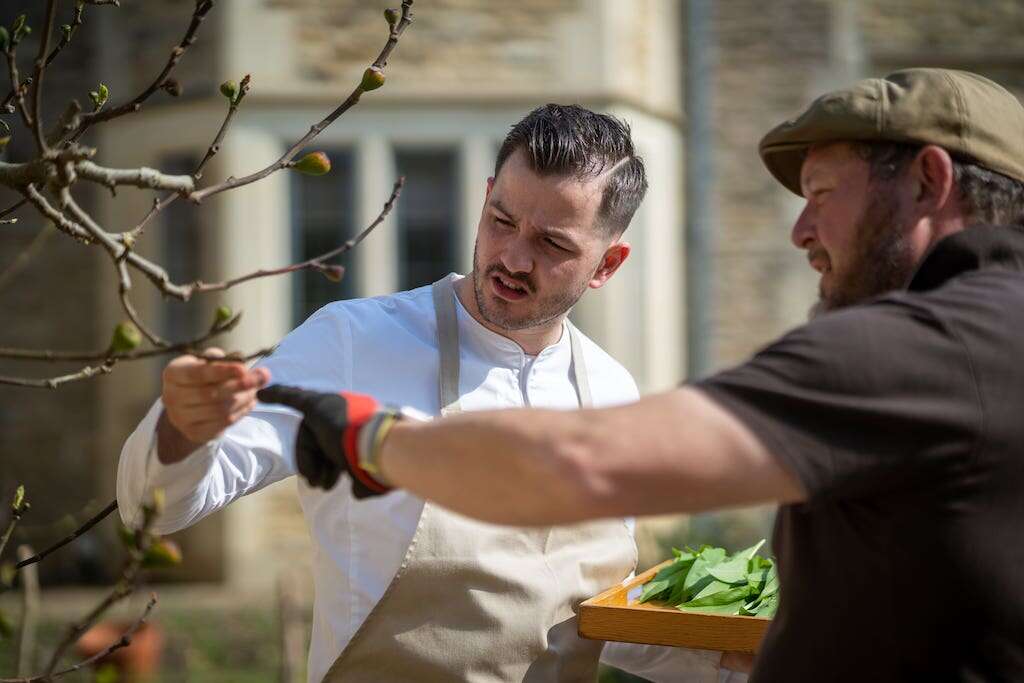
The kitchen sources almost everything else from local suppliers, some of it hyper-local (the beef – 100% grass-fed, organic Aberdeen Angus – comes from the farm next door).
Bringing a draughty farmhouse up to modern standards of energy efficiency is no mean feat, but Whatley Manor has managed to achieve a silver accreditation from EarthCheck. Driven largely by the general manager Sue Williams, the hotel is on target to reduce Scope 1 and Scope 2 emissions by 100% and 90% by 2028, which would put it up there with the most sustainable five-star accommodations in the world.
The chef
While long established as a Michelin-star restaurant, it recently underwent a big change in the kitchen. Ricki Weston replaced Niall Keating in 2022, just weeks before the new Michelin Guide was out. Keating had taken Whatley Manor to two-star status, and those stars have a tendency to depart with the chef. Weston had almost no time at all to impress inspectors with his own menu. Impressively, he has retained one in the two most recent guides.
Although thrust into the spotlight, Weston was a natural successor to Keating, spending three years under his leadership before becoming executive head chef. Before that, he worked at the two-Michelin-starred Restaurant Sat Bains in Nottingham, one of the nine restaurants that also has a green star.
Weston is a true convert of the kitchen garden concept and sources many herbs and root vegetables from the grounds. Our visit coincided with a bumper wild garlic harvest and while it was too soon to see it on Weston’s seasonal tasting menu, its unmistakable scent illuminated the senses on a morning tour of the grounds.
The menu
So many restaurants have shunned classic service in favor of informality, but The Dining Room at Whatley Manor is a champion of tradition: White table clothes, formal and attentive service, and a sommelier with so much experience that he has forgotten more about wine than most will ever learn.
But Weston has attempted to shake up the traditional table service by taking guests on a journey. The evening starts in the Swiss-cabin-inspired Drawing Room. Here you can enjoy cocktails from an accomplished menu and the first bite-sized amuse-bouche. Then, it’s off to a chef’s table in the heart of Weston’s kitchen.
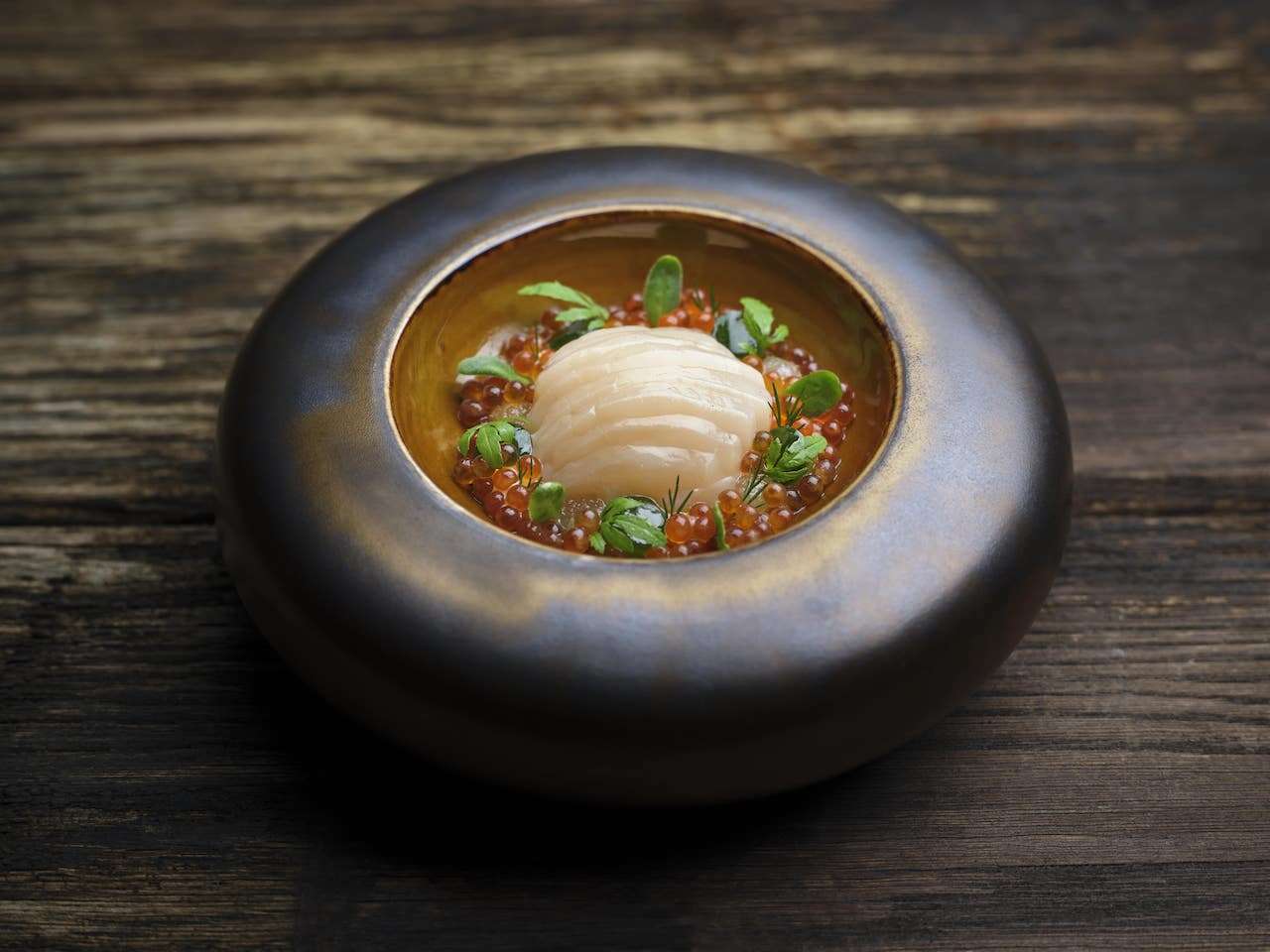
Here, you can watch his team in action – disagreements and all – as you sample two canapes; one a mussel tart and the other a delicious choux bun topped with an onion and pancetta ragu and 36-month-aged parmesan cheese.
Coming from the bright lights and loud chatter of the kitchen, you need several minutes to adapt to the quiet and low-lit dining room. This is where you settle into the main event – a multi-course experience lasting up to three hours.
There is plenty to suggest Weston may be on his way to two-star status. The cured scallop served with compressed cucumber and pear, and cod roe is both technically impressive and eloquently balanced. A beef dish utilizing the under-appreciated Jacob’s ladder, which Weston cooks for 17 hours before pairing it, ingeniously, with a smoke eel emulsion. Eel is both native to the UK and under-utilized by its squeamish inhabitants. It is commendable that Weston makes the dish not only approachable but one of the best on the menu.
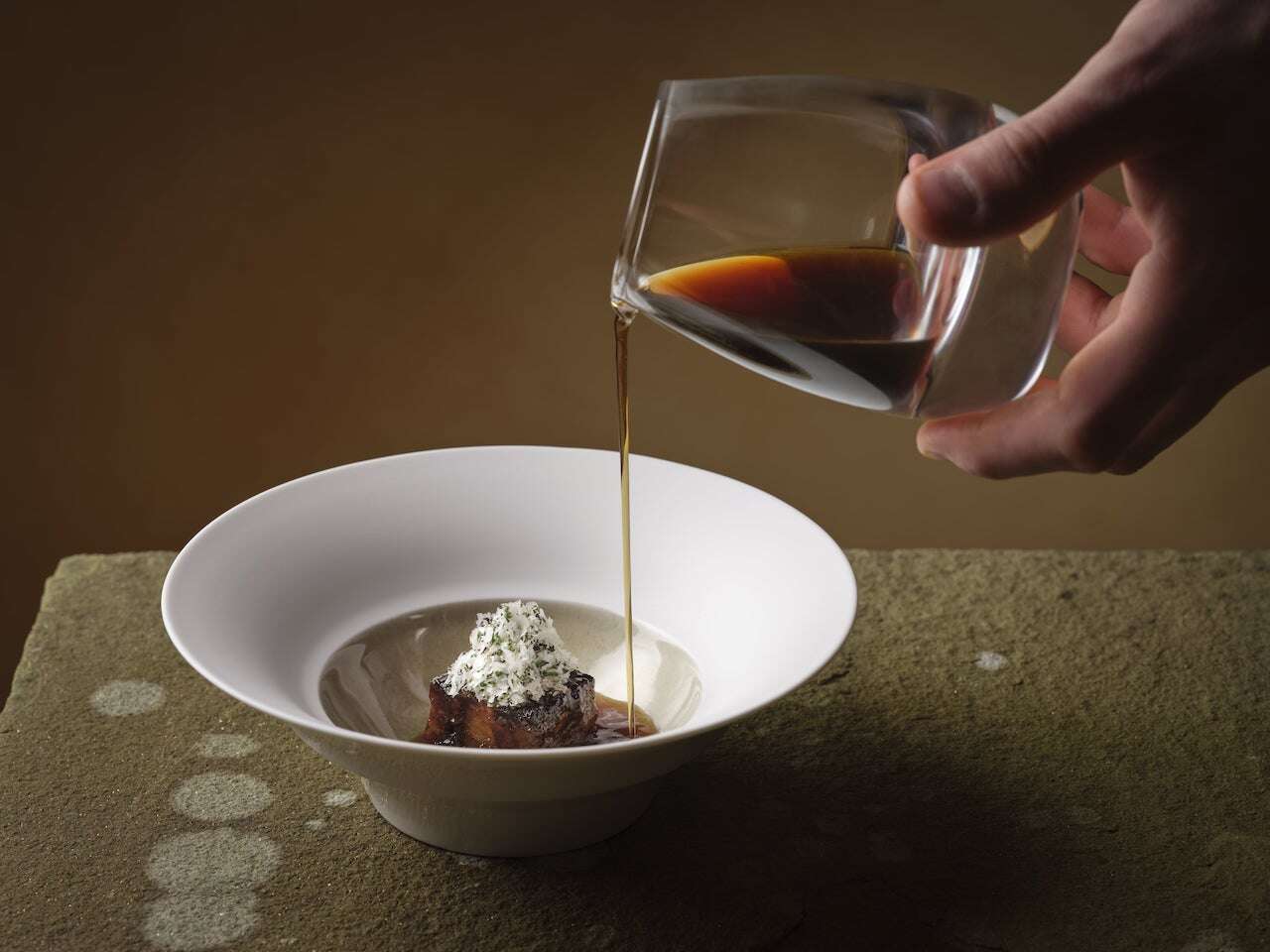
Weston saves the best for last and this is where those two-star credentials really shine. A slow-roasted Devonshire duck served with a ratatouille and a clever ‘cherry tomato’ that turns out to be anything but. This tomato is a mixture of roasted red pepper and de-hydrated tomato, mixed together with some of the red pepper ketchup. Once set, a quick dip in red pepper jelly gives it a tomato sheen. Yes, it looks exactly like a tomato. No, it takes nothing like a tomato. Perhaps I’m swayed by a distaste for tomatoes, but it’s the best thing I eat all night.
The sommelier offers two wine pairings, one of which showcases the best labels in its cellar for £265 ($340) per person. However, it is the cheaper Journey pairing ($120) that captures the imagination. Each of the wines comes from a different country, pairing well with the menu but also showcasing the best of the world’s growing regions.
The hotel
The Dining Room is a destination in itself and draws gourmands from around the country, but take the Michelin-starred restaurant out and you still have a thriving business. The hotel is just a big bundle of timeless class. It succeeds in offering a traditional sense of an English cottage while simultaneously being exceedingly modern.
It is making monumental efforts to be more sustainable, but beyond the plastic-free amenities, you really don’t notice it. From a guest’s point of view, the sustainability efforts are free of compromise. It stands as evidence that five-star luxury can have a small footprint.
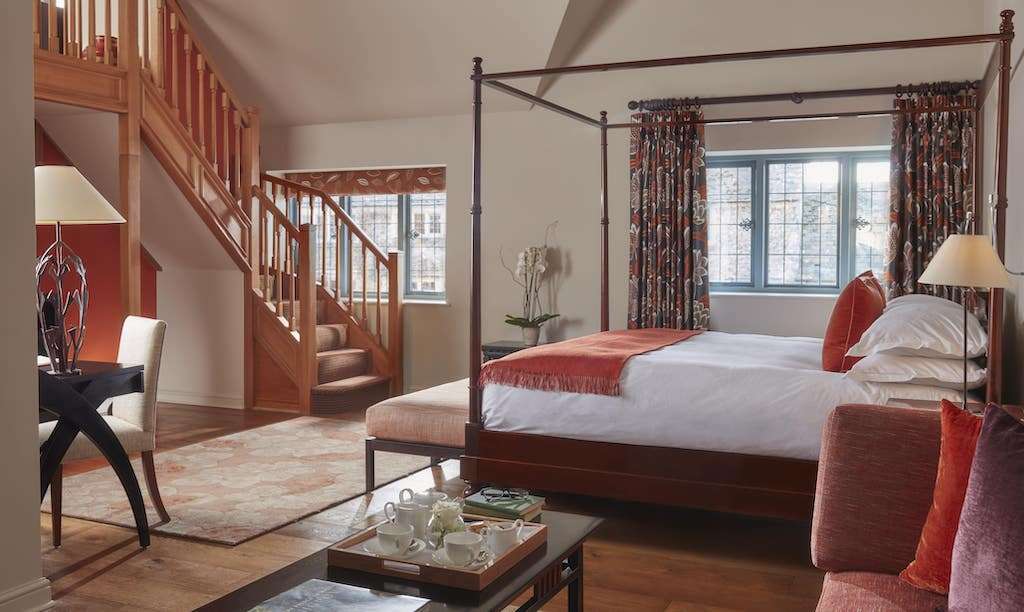
We stayed in one of the hotel’s two Deluxe Suites, its top-level accommodation offering a substantial amount of floor space, king-sized beds, standalone bathtubs, Bang & Olufsen TVs and views out across the Cotswolds. The wooden beams keep the Cotswolds charm flowing, as does the warm service, creaky staircases and the beautiful surrounding gardens.
The spa is both surprisingly large and sufficiently modern. Spa day trippers mix with hotel guests, but it never feels overcrowded. There is an extensive treatment menu and a flotation pod designed to alleviate you of all senses. Exactly why you’d want to do that in a place as pleasant as this, escapes me.
The Michelin Star Experience is available from £1,124 (approx $1,450) for two people, including a one-night stay in the Deluxe Suite. Contact whatleymanor.com, +44 1666 822 888, enquiries@whatleymanor.com
